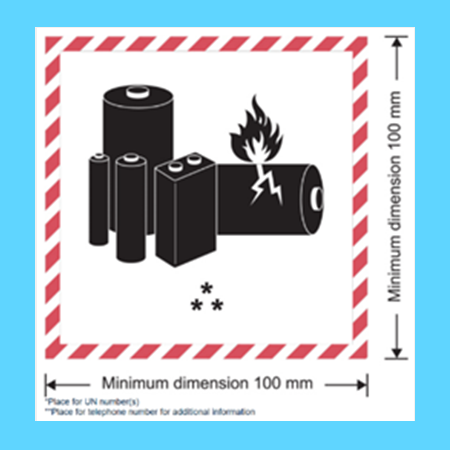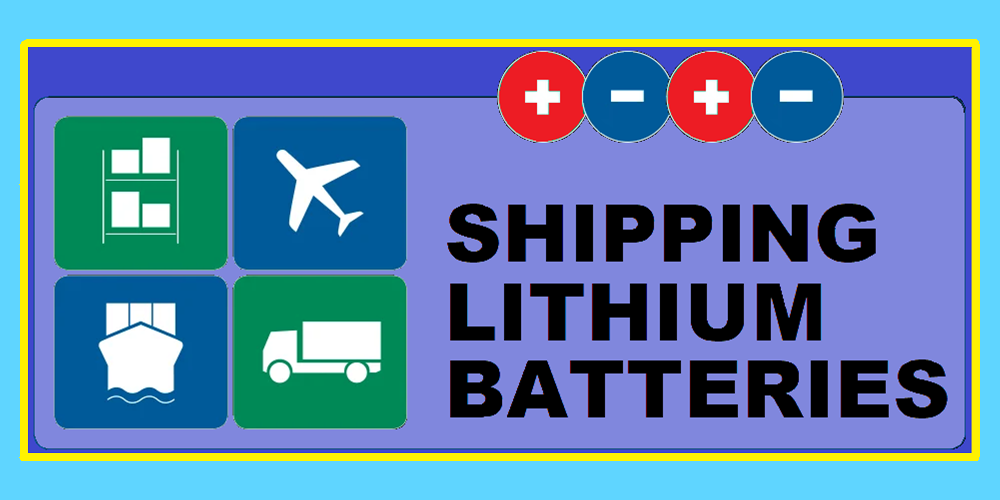|
_
|
 |
There are some important changes that affect how you ship lithium batteries.
As you may know, lithium batteries are considered dangerous goods because they can overheat, catch fire, or explode under certain conditions. That’s why they must be properly labeled, packaged, and handled when they are transported by air, sea, or land.
The lithium battery mark is used on packaging so carriers and handlers know the contents. This is a rectangular or square with red hatching and the image of batteries with one on fire. It must include the UN number and a phone number for more information.
|
_
|
|
_
|
However, this mark is going to change soon. The US Pipeline and Hazardous Materials Safety Administration (PHMSA) has proposed to revise the lithium battery mark by removing the telephone number requirement. This is to align with the international standards that have already done the same.
If it is adopted, this will mean that you will have two options for the lithium battery mark: the current one with the telephone number, or the new one without it. PHMSA has proposed a transition period that will allow you to use either mark until December 31, 2026. After that, you will have to use the new mark without the telephone number.
But before you rush to switch to the new mark, there are some things you need to consider. First, the new mark is not yet a final rule. It is still a proposal that may change or be delayed. PHMSA has issued guidance that they will not take enforcement if you now use the new lithium battery mark without the telephone number, but some US carriers may not accept the new lithium battery mark until the final rule is published.
Second, even after the final rule is published, some carriers may take some time to update their policies and train their staff on the new mark. This means that they may still reject your shipments if they see the new mark without the telephone number.
So, what should you do? Based on our experience, we strongly recommend that you keep using the current mark with the telephone number until PHMSA issues the final rule. Then, we suggest that you wait another 3 to 6 months and contact your carriers to see if they are ready to accept the new mark without the telephone number. This way, you can avoid any delays or rejections of your shipments due to confusion or misunderstanding.
There is another change that you need to be aware of if you ship UN3480 lithium ion batteries or UN3090 lithium metal batteries by themselves. These are the cells or batteries that are not contained in or packed with equipment. PHMSA has proposed to remove the exceptions that apply to small lithium cells and batteries when they are shipped by themselves. This means that you will have to ship them as fully regulated hazardous materials, with all the requirements for packaging, marking, labeling, & documentation.
This change has already been implemented by the International Air Transport Association (IATA) since January 1, 2022. So, if you have shipped these batteries by air since then, you should have already followed this new requirement per IATA Packing Instructions 965 IA or IB or 968 IA or IB. However, if you have shipped them by a domestic air carrier that uses the 49 CFR instead of the IATA DGR and allowed this exception, then you may still use the exception until PHMSA publishes the final rule.
We usually find that shipping by air under the IATA DGR is easier than shipping under the 49 CFR air transportation requirements. But, as always, don’t forget to check with your specific carrier for any additional lithium battery variations or restrictions.
We hope that this article has helped you understand the upcoming changes for shipping lithium batteries. If you have any questions or need any assistance, please feel free to contact us. We are always happy to help you with your shipping needs.
Infotrac is your source for the Emergency Response Service which allows you to utilize our phone number on shipping papers, lithium battery marks, and Safety Data Sheets. We also provide training in shipping lithium batteries and other hazardous materials. Call 1-800-535-5053 for more information.
|
_
|






